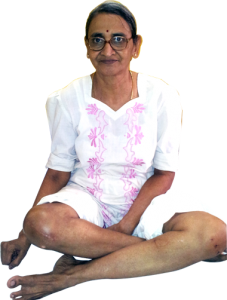Does your beloved one suffer from knee pain? It might be due to osteo-arthritis ? Read about Knee pain treatment here.
Many people know very little about knee pain,” Contrary to what many may think, knee pain is not an inevitable part of aging. Unless someone has suffered an injury, knee pain in the 50-plus age group usually means osteoarthritis, a degenerative disease in which the joints’ natural shock absorber — cartilage — begins to break down. Without their protective layer, bones begin to scrape against one other, causing joint pain and thwarting movement.
But never diagnose yourself. “The average person may not be able tell if it’s the joint, a torn tendon, or pain in the area of the joint”. I need to evaluate you to make sure you do in fact have joint pain and why.”
X-rays can sometimes show changes that indicate cartilage breakdown, but often, the images are inconclusive. “Physical exam, special x rays and MRI can all be helpful in establishing a diagnosis that is not evident on normal X-rays.”
While there is no spontaneous and natural cure for knee pain, you can find intermittent relief with pain killers. Definitive treatment depends upon the expectations, lifestyle, pain threshold and age. They range from lifestyle changes to medications to surgery — and should usually be tried in that order.
Lifestyle Changes
If you are overweight, the first step is to shed those excess kilos. A recent study shows that losing as little as 11 pounds (5 kilos) can cut the risk of osteoarthritis of the knee by 50%. The next step is to work with a physical therapist to develop an exercise program that’s right for you. Walking, and other low-impact exercises that don’t put pounding pressure on the joints are helpful but high impact exercises such as jogging should usually be avoided. “Exercise is a lifetime commitment,” I recommend that patients work out for 40 minutes at a time, three or four days a week. Wearing the correct footwear is also important. A regular and brisk morning walk for one hour will usher in a feeling of well being and is excellent all-round exercise. Putting all your joints through a full range of movement will go a long way in preventing stiffness.
Medications
If lifestyle changes don’t ease your pain, medication is often prescribed. For mild pain, a simple painkiller can often help. Cold therapy can often provide temporary relief. For more prolonged pain which is not amenable to simple drugs, your physician will write you up for an anti- inflammatory drug.
Surgery including Knee Replacement
For senior citizens if all else fails to relieve your pain and disability, knee replacement surgery is recommended.
Traditionally knee replacement were advised only for senior citizens. Now durable implants and techniques enable even young people to get their benefit and lead a better quality of life.
Recent advances in Knee replacement
People are not content with standard knee replacement and cite the example of a neighbor or friend who has not benefited.
The reason could be inadequate function after surgery. A normal knee replacement provides only about 100 degrees of bending whereas a High flexion Knee replacement provides up to 155 degrees.
“High flexion knee replacement is thus preferred by south Indians as it allows better function”.
Summary
“Total knee replacement is extremely successful, lasting over 20 years for more than 90% of patients,” The procedure has become increasingly safer, more functional and durable.
In summary Joint replacements have become safer and durable even for younger patients.
If you want a knee replacement for your parents or relatives, e mail drvenkat@kneeindia.com.

